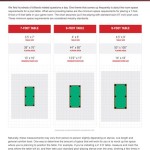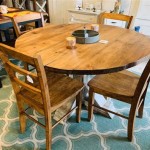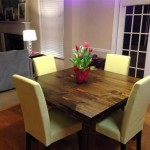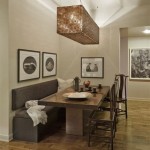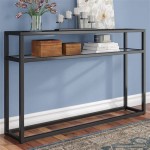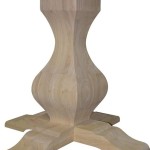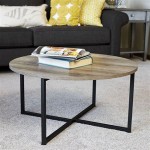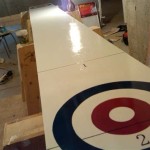The Enduring Appeal of Side Tables with Turned Legs
Side tables, ubiquitous fixtures in living rooms, bedrooms, and hallways, offer a surface for lamps, beverages, books, and decorative items. Among the diverse styles available, those featuring turned legs stand out for their blend of functionality and aesthetic appeal. The "turned" element refers to the process of shaping wood on a lathe, creating elegant, often symmetrical, designs that elevate a simple table into a piece of refined furniture. This article will explore the historical context, stylistic variations, construction techniques, and decorative considerations surrounding side tables with turned legs.
A Brief History of Turned Leg Furniture
The art of wood turning dates back to ancient civilizations, with evidence suggesting its use in Egypt and other parts of the ancient world. Early lathes were manually operated and required considerable skill to produce consistent results. The development of more sophisticated lathes, particularly those powered by water or later electricity, allowed for greater precision and efficiency in creating turned components for furniture. During the Renaissance and subsequent periods, turned legs became a defining feature of many furniture styles, from the ornate pieces of the Baroque era to the more restrained designs of the Neoclassical movement. The Georgian, Queen Anne, and Chippendale styles, all influential in furniture design history, frequently incorporated turned legs, reflecting a preference for graceful curves and decorative detailing. The industrial revolution brought mass production techniques, but even with these advancements, hand-turned legs retained a certain cachet of quality and craftsmanship. Today, while mass-produced options exist, custom-turned legs and antique pieces remain highly valued for their unique character and historical significance.
The use of the lathe allowed craftspeople to move beyond simple, straight furniture legs. The beauty of turned wood lies in the controlled shaping of the material, enabling the creation of complex profiles, delicate details, and consistent forms. This opened a world of design possibilities previously unavailable to furniture makers, and the use of turned legs rapidly spread throughout Europe and the Americas as furniture designs and techniques were shared.
The rise of different furniture styles through the centuries further fueled the evolution of turned legs. Each era introduced its own set of preferred shapes, proportions, and decorative motifs. The bulbous forms of Baroque legs gradually gave way to the more slender and tapered shapes of Neoclassical designs. The use of reeding, fluting, and other decorative carving on turned legs added further visual interest and emphasized the craftsmanship involved in their production.
Styles and Variations in Turned Leg Design
Side tables with turned legs exhibit a vast range of styles, reflecting the diverse influences of different historical periods and design movements. The specific form of the turned leg is often the defining characteristic that distinguishes one style from another. For example, a Queen Anne style side table might feature cabriole legs with a pad foot, characterized by a graceful S-curve and a subtle, rounded foot. In contrast, a Federal style table might have tapered, reeded legs ending in delicate spade feet. Victorian-era tables often boast more elaborate turning, with complex profiles, applied ornamentation, and a generally more ornate aesthetic.
Beyond specific historical styles, turned legs can also be categorized based on their overall shape and profile. Some legs are straight and tapered, offering a simple and understated look. Others are more curvaceous, featuring bulbous sections or gentle bends. The complexity of the turning can also vary considerably, ranging from simple, single-bead details to elaborate multi-tiered designs. The choice of wood also plays a role in the overall aesthetic, with hardwoods like maple, cherry, and walnut offering different grain patterns and color variations that can enhance the beauty of the turned leg. Painted or stained finishes can further customize the look, allowing the table to blend seamlessly with existing décor or to stand out as a statement piece.
The table top itself also contributes significantly to the overall design. Common shapes include round, square, rectangular, and oval. The edge profile of the table top can range from a simple, straight edge to a more decorative molded edge. Some tables feature drawers or shelves, adding functionality and visual interest. The combination of the table top design and the turned leg style creates a unique and personalized piece of furniture.
Construction Methods and Materials
The construction of a side table with turned legs involves several stages, beginning with the selection of suitable wood. Hardwoods like maple, cherry, walnut, and oak are commonly used for their strength, durability, and attractive grain patterns. The legs are typically turned separately on a lathe, using specialized tools to shape the wood according to a pre-determined design. Once the legs are turned, they are sanded smooth and prepared for finishing.
The table top is typically constructed from solid wood or plywood, depending on the desired aesthetic and budget. Solid wood offers a more traditional look and feel, while plywood can be more cost-effective and stable, particularly for larger table tops. The table top is attached to the legs using various joinery techniques, such as mortise and tenon joints, dovetail joints, or screws and glue. The specific joinery method used depends on the design of the table and the desired level of strength and durability.
The finishing process involves applying a stain, paint, or clear coat to protect the wood and enhance its natural beauty. Stains can be used to alter the color of the wood, while paints offer a wider range of color options. Clear coats, such as varnish, lacquer, or polyurethane, provide a protective layer that resists scratches, moisture, and other forms of damage. The choice of finish depends on the desired aesthetic and the intended use of the table.
In modern manufacturing, CNC (Computer Numerical Control) lathes are sometimes employed to produce turned legs with consistent precision. However, hand-turned legs retain a certain level of premium quality and are often preferred for high-end or custom-made pieces. Whether mass-produced or handcrafted, the durability and aesthetic appeal of a side table are directly linked to the quality of the materials used and the precision of the construction process.
Decorative Considerations and Placement
When selecting a side table with turned legs, several decorative considerations should be taken into account to ensure that the table complements the existing décor and serves its intended purpose effectively. The style of the table should be consistent with the overall style of the room, whether it be traditional, contemporary, or eclectic. The size of the table should be appropriate for the space in which it will be placed, avoiding overcrowding or leaving the table looking too small and insignificant.
The color and finish of the table should also be carefully considered. A dark wood finish can add warmth and sophistication to a room, while a light-colored finish can create a more airy and inviting atmosphere. Painted finishes offer a wider range of color options and can be used to add a pop of color to a neutral room. The hardware, such as drawer pulls or knobs, should also be consistent with the overall style of the table and the room.
The placement of the side table is also an important consideration. A side table placed next to a sofa or armchair provides a convenient surface for drinks, books, and other items. A side table placed next to a bed serves as a nightstand, providing a surface for a lamp, alarm clock, and other bedside essentials. A side table placed in a hallway or entryway can serve as a decorative accent, providing a surface for displaying plants, vases, or other decorative objects. Consider the table's height relative to the seating or bed next to which it will be placed. The ideal height typically allows easy reach for items placed on the table.
The top of the side table can be further enhanced through careful decoration. Lamps provide both functional lighting and aesthetic appeal. Books, decorative boxes, and small sculptures can add personality and visual interest. When selecting accessories, consider the overall color scheme and texture of the room to create a cohesive and harmonious look. The key is to strike a balance between functionality and aesthetics, creating a space that is both practical and visually appealing.
Ultimately, the appeal of side tables with turned legs lies in their timeless elegance and versatility. Their ability to seamlessly blend functionality with decorative charm makes them a cherished addition to any home. From the subtle curves of a Queen Anne leg to the bold reeding of a Federal style piece, these tables continue to offer a touch of sophistication and craftsmanship to living spaces worldwide.

Art Deco Coffee Table With Turned Spindle Legs Journey East

Abigail End Table

Old Pine Manor Turned Leg End Table Made To Order Custom Furniture

Wooden Side Table With Turned Legs And Drawer For Sale At Pamono

Turned Leg Nightstand With Drawer World Market

Highland End Table W Turned Legs Intercon Furniture

Turned Leg Side Table 350

Turn Legged 1 Drawer Side Table

Small Old Pine Turned Leg Side Table In Antique Tables

Artisan Wooden Side Table With Spindle Turned Legs

